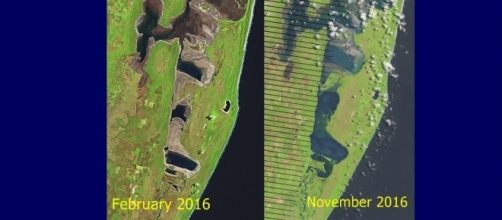The iSimangaliso Wetland Park, Zululand World heritage Site issued a press release November 28 saying that the combination of recent rains and the result of dredge spoil removal has greatly improved the situation in the drought -stricken area.
Zululand's iSimangaliso UNESCO Site - Lake St. Lucia water levels up
CEO of iSimangaliso Andrew Zaloumis said, “While this is excellent news for the system it is still not out of the woods and more rain is needed, especially in the catchment areas.” The recent photographs taken on 8 November show a dramatic difference to the water levels in Lake St. Lucia – Africa’s largest estuarine lake which is the world’s "oldest proclaimed estuary." Images taken in February of this year were very bleak and showed that only 10 percent of the surface level of the lake was underwater.
This has now improved to 90 percent of the area covered with water and instead of isolated patches, the Lake is once again a large single bodied entity. In the drought, the Lake had become isolated from the Narrows but now water can flow to the mouth.
Coastal rains and waterway restoration bring relief
Coastal rains have accounted for much of the relief to the ecosystem, but iSimangaliso attribute a large amount of the water improvements to the hydrological water restoration project that is currently underway. Historically, it was believed that if the main river - the uMfolosi - that fed the Lake was allowed to flow freely, that in time it would cause silting of the estuary. The area was artificially managed for nearly sixty years by dredge spoil which was deposited in the course of the uMfolozi River in an attempt to limit its inflows into Lake St Lucia Estuary.
More recent research showed that this practice had severely restricted the amount of freshwater to Lake St Lucia from the uMfolozi River. The ongoing removal of dredge spoil has just been boosted with the addition of six automated dump trucks, two bulldozers and two excavators which began moving sand from the rehabilitation site this week.

